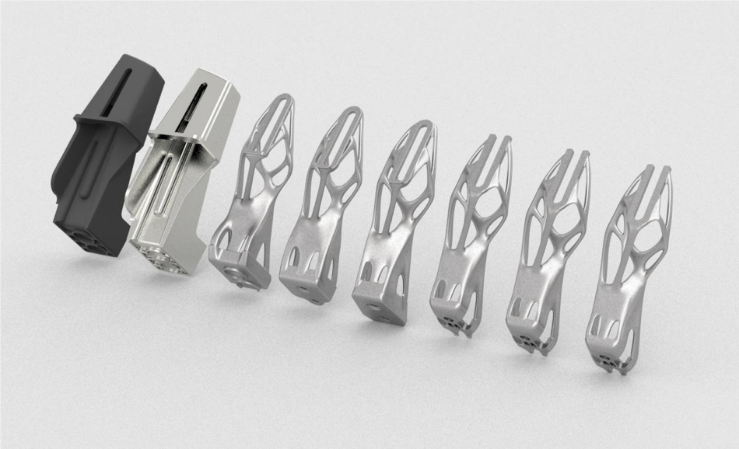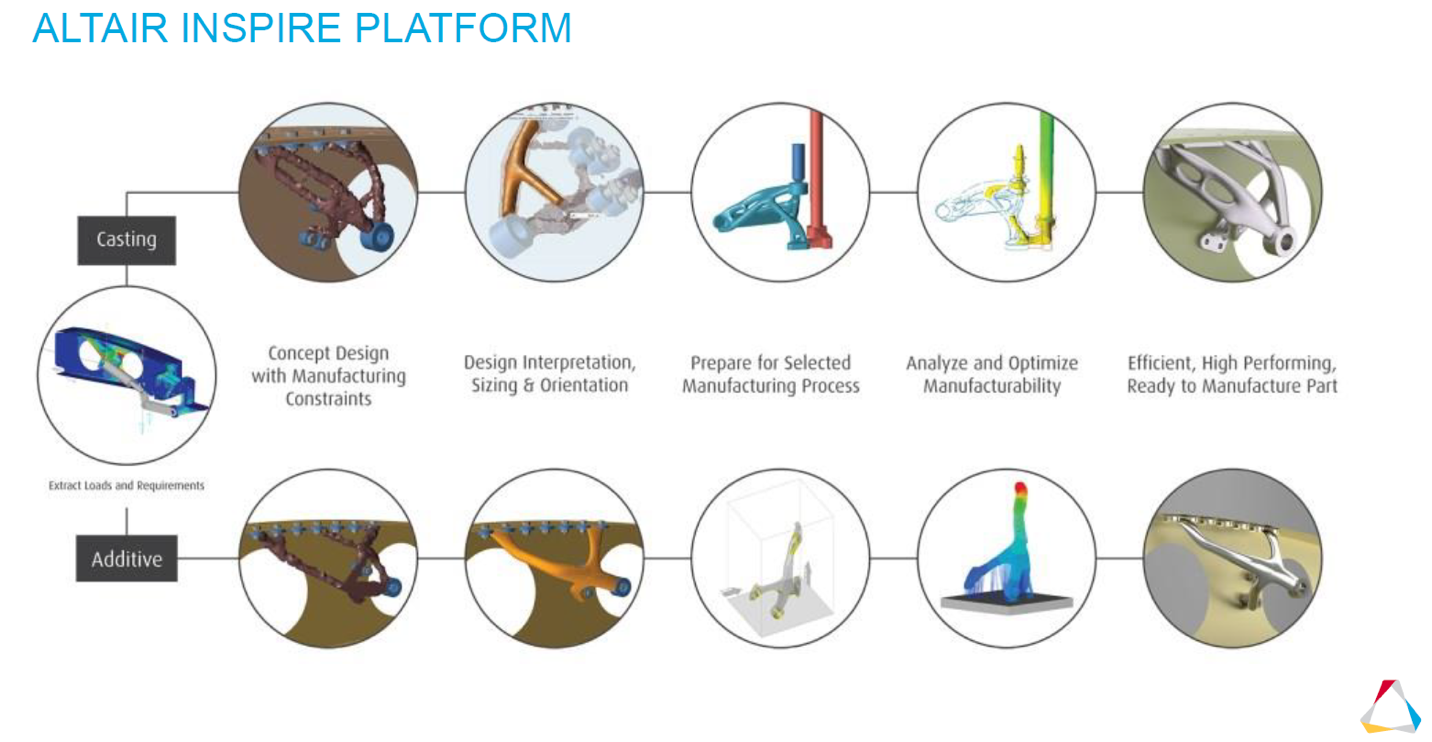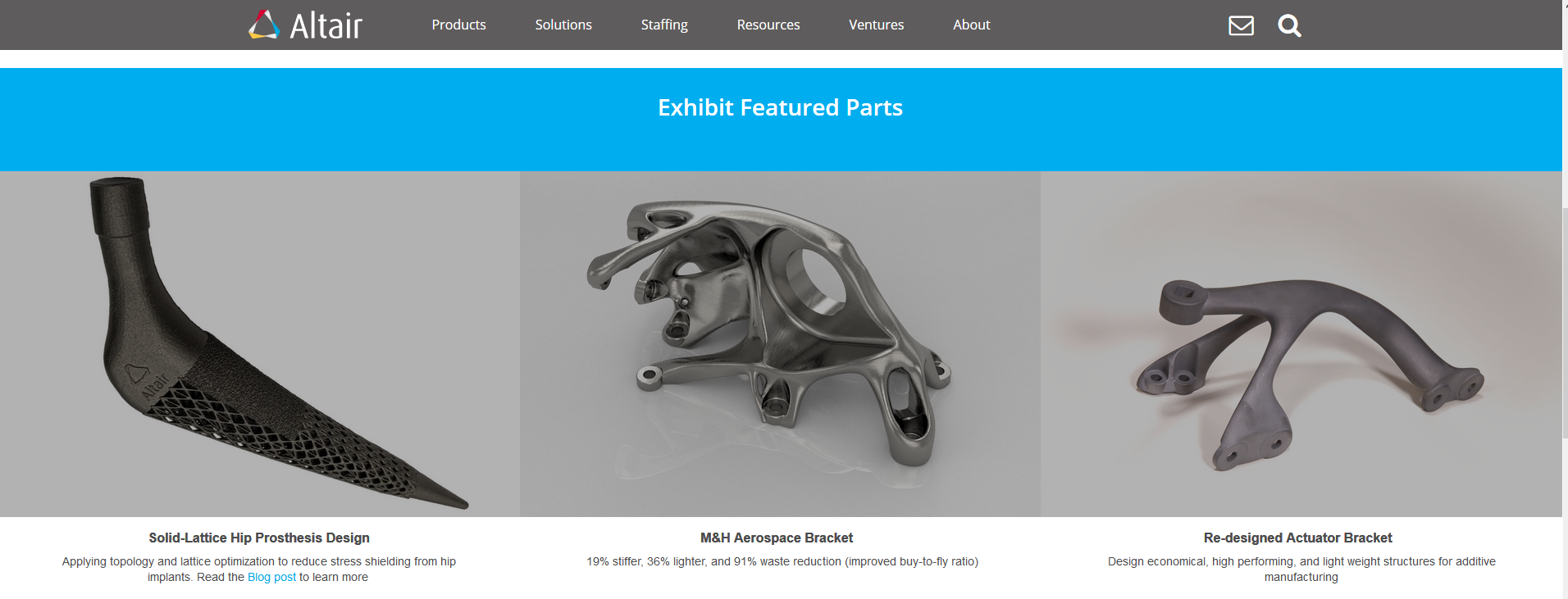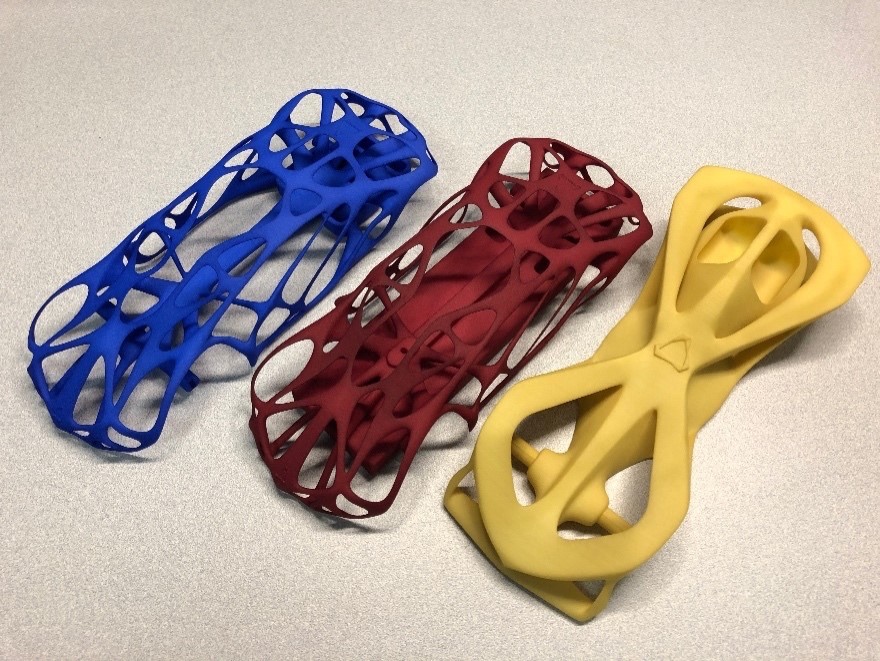Inspire, Ignite, and Innovate
Yes, that is the theme for this year’s RAPID-TCT conference, and no, I did not influence the RAPID-TCT committee’s choice. We named our product Altair Inspire™ years ago to evoke exactly the same sentiment towards product design. We are glad it was the first word picked to ignite innovation in product design and manufacturing.
It is exciting to see the additive manufacturing conference right here in the city of Detroit, close to where I went to school, and where Altair is headquartered. Here, on the shores of the Detroit river, the model T catalytically launched a massive expansion of manufacturing and the growth of the middle-class, catapulting the united states economy in the early 20th century. Are we at a similar influx of industry with the wide-spread and rapidly growing adoption of additive manufacturing?
Last year, BMW won the Altair Enlighten Award for the first serial production of its i8 bracket, taking a giant leap in instilling confidence in the broad auto manufacturing community, and setting the stage for the path forward.

Another great example of how AM can be used to save time, improve design and ultimately make someone’s life better is in the dental industry. Patients can get a customized crown within days after the dentist scans their teeth, converting the picture to an STL (a file format compatible with 3D printing) and then sends it across to his supply chain. This end-to-end integration of the entire process from concept to completion is something to emulate by other industries. 3DHubs and others are trying to create a marketplace as well.
The aerospace industry was the earliest to explore AM, with one the earliest success cases; the RUAG aero bracket https://youtu.be/dIrrPfjf6SE. I am referring to this video because it clearly highlights the entire process.
The first step, however, is to rethink! To put an inspirational product out there that is effective (quick, efficient and economical), you must be totally cognizant of two things:

Here is an example of how the design generation can alter based on the downstream manufacturing requirements, even though the performance requirements are identical.
We are excited to reveal Altair Inspire Print3D at the show, as an immersive complete environment to get #1 and #2 right early in the design phase and evaluate any build issues in the area of metal printing.

We are also thrilled to be a part of the General Motors Knowledge Center wherein you will see spectacular marriage of design and performance in the form of fun derby cars designed completely within the Inspire Platform. You will also learn how you can leverage Simulation-driven design in your daily design work from the experts. They will discuss the design and production of high-volume vehicles.

We will be awarding a few lucky people with a beautiful 3D-printed metal pen designed in Inspire Studio and simulated in Inspire Print3D . This pen is incredibly special in that it was designed to be printed directly without requiring any supports! It may seem like just a beautifully designed pen, but it solves one of AM’s biggest problems – waste. The engineers at Altair designed these to require no waste or need for supports. If you stop by our booth - 1531, you can see they require zero post-processing. The pens can simply be snapped right off the build plate and will quickly become your favorite writing instrument!

I would highly encourage you to schedule a meeting with our experts. I hope to meet you at RAPID.
It is exciting to see the additive manufacturing conference right here in the city of Detroit, close to where I went to school, and where Altair is headquartered. Here, on the shores of the Detroit river, the model T catalytically launched a massive expansion of manufacturing and the growth of the middle-class, catapulting the united states economy in the early 20th century. Are we at a similar influx of industry with the wide-spread and rapidly growing adoption of additive manufacturing?
Is 3D printing the new Renaissance in manufacturing or just hype?
According to the latest report from 3DHubs (now Hubs), the total market for manufacturing is currently around $12.7 trillion, of which additive manufacturing (AM) makes up about $10 billion; making it around 0.1 percent, a fraction of traditional methods. However, it is predicted to grow at a clip of 27 percent, essentially doubling every three years. One of the key findings here, is that the biggest barrier for adoption is a lack of knowledge. To help AM on this growth path, conferences like RAPID+TCT, alongside broad communication among various technology companies is vital. Altair has been on this journey for many years as a world leader in the software that makes AM possible.Last year, BMW won the Altair Enlighten Award for the first serial production of its i8 bracket, taking a giant leap in instilling confidence in the broad auto manufacturing community, and setting the stage for the path forward.

Another great example of how AM can be used to save time, improve design and ultimately make someone’s life better is in the dental industry. Patients can get a customized crown within days after the dentist scans their teeth, converting the picture to an STL (a file format compatible with 3D printing) and then sends it across to his supply chain. This end-to-end integration of the entire process from concept to completion is something to emulate by other industries. 3DHubs and others are trying to create a marketplace as well.
What should be additively manufactured? How should I get started?
I get asked this question all the time. My answer - don't print something just because you want to – just for the fun of it. I tell them that you must subtract before you add. More than 6,000 companies across the world rely on our software solutions to help optimize (subtract) their highly-engineered products, and many of them also have AM initiatives among the many other traditional methods.The aerospace industry was the earliest to explore AM, with one the earliest success cases; the RUAG aero bracket https://youtu.be/dIrrPfjf6SE. I am referring to this video because it clearly highlights the entire process.
The first step, however, is to rethink! To put an inspirational product out there that is effective (quick, efficient and economical), you must be totally cognizant of two things:
- Performance requirements (loads and boundary conditions)
- Manufacturing process (constraints)

Here is an example of how the design generation can alter based on the downstream manufacturing requirements, even though the performance requirements are identical.
What are we showcasing at RAPID? What are we announcing?
Over the past three decades, Altair has pioneered generative design solutions for its customers by developing and implementing simulation technologies that allow users to design innovative, lightweight, and more sustainable products. The world’s best product companies have relied on us for years for a reason; we’ve been in the game from the beginning. Altair will be presenting real-world, commercial customer stories about their design approach and what they have accomplished – and we’ll let the results speak for themselves.We are excited to reveal Altair Inspire Print3D at the show, as an immersive complete environment to get #1 and #2 right early in the design phase and evaluate any build issues in the area of metal printing.

We are also thrilled to be a part of the General Motors Knowledge Center wherein you will see spectacular marriage of design and performance in the form of fun derby cars designed completely within the Inspire Platform. You will also learn how you can leverage Simulation-driven design in your daily design work from the experts. They will discuss the design and production of high-volume vehicles.

We will be awarding a few lucky people with a beautiful 3D-printed metal pen designed in Inspire Studio and simulated in Inspire Print3D . This pen is incredibly special in that it was designed to be printed directly without requiring any supports! It may seem like just a beautifully designed pen, but it solves one of AM’s biggest problems – waste. The engineers at Altair designed these to require no waste or need for supports. If you stop by our booth - 1531, you can see they require zero post-processing. The pens can simply be snapped right off the build plate and will quickly become your favorite writing instrument!

I would highly encourage you to schedule a meeting with our experts. I hope to meet you at RAPID.




